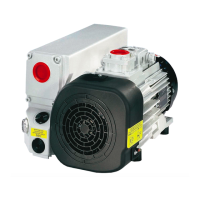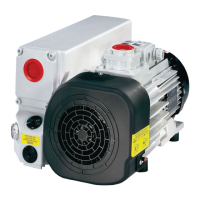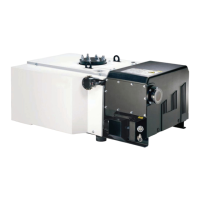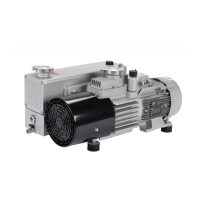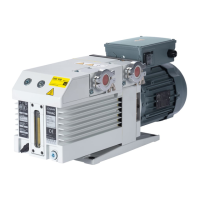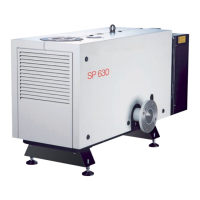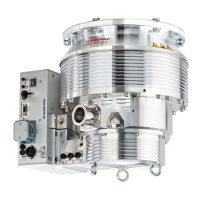26 300270042_002_C2 - 07/2020 - © Leybold
Operation
Then drain the oil and pour in clean oil up to the top edge of the oil-level
glass (see Section 3.3). Seal the connection ports. Special preservation or
slushing oils are not necessary.
When the pump has been switched off due to over-heating, initiated by the
motor or its protection, the pump must be cooled down to the ambient tem-
perature, and must only be switched on again manually after having elimina-
ted the cause. In order to prevent the pump from running up unexpectedly
after a main power failure, the pump must be integrated into the control
system in such a way that the pump can only be started by a manually ope-
rated switch. This applies equally to emergency cut-off switches.
In case of switching processes in connection with a pump which has war-
med up under operating conditions, the pump must then not be directly swit-
ched on again.
2.7 Pump Ultimate Pressure
If the system cannot reach the pressures specified in the technical date,
measure the ultimate pressure directly at the pump’s intake port after discon-
necting the pump from the system.
The ultimate pressure of non-condensable gases (partial pressure of air) can
only be measured with a compression vacuum gauge or a partial pressure
gauge. Precise measurements can only be obtained with calibrated instru-
ments.
Upon initial start-up, after prolonged idle periods or after an oil change, it
takes a while until the pump reaches the specified ultimate pressure. The
pump has to attain its operating temperature, and the pump oil has to be
degassed. We recommend operating the pump initially with the gas ballast
valve open.
The ultimate pressure depends on the pump temperature and the pump oil
used. The best ultimate pressure can be obtained at a low pump temperatu-
re and by using the recommended oil types.
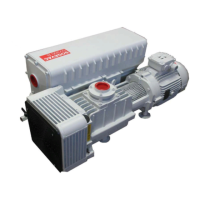
